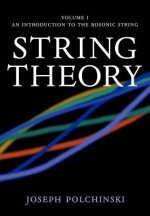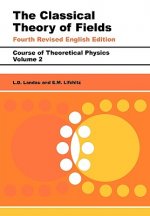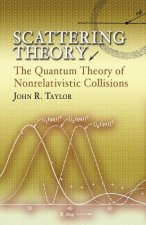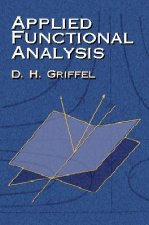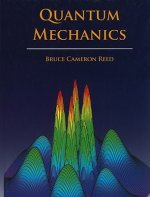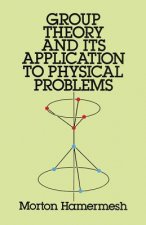
Versand
Kaufberater





Passt nicht? Macht nichts! Bei uns ist die Rückgabe innerhalb von 30 Tagen möglich
 Geschenkgutschein
In einem beliebigen Wert
Geschenkgutschein
In einem beliebigen Wert
Mit einem Geschenkgutschein können Sie nichts falsch machen. Der Beschenkte kann sich im Tausch gegen einen Geschenkgutschein etwas aus unserem Sortiment aussuchen.
Quantum Field Theory
 Englisch
Englisch
 92 b
92 b
30 Tage für die Rückgabe der Ware
Kunden kauften auch


Preface General References 1. Classical Theory 1.1 Principle of Least Action 1.1.1 Classical Motion 1.1.2 Electromagnetic Field as an Infinite Dynamical System 1.1.3 Electromagnetic Interaction of a Point Particle 1.2 Symmetries and Conservation Laws 1.2.1 Fundamental Invariants 1.2.2 Energy Momentum Tensor 1.2.3 Internal Symmetries 1.3 Propagation and Radiation 1.3.1 Green Functions 1.3.2 Radiation 2. The Dirac Equation 2.1 Toward a Relativistic Wave Equation 2.1.1 Quantum Mechanics and Relativity 2.1.2 The Dirac Equation 2.1.3 Relativistic Covariance 2.2 Physical Content 2.2.1 Plane Wave Solutions and Projectors 2.2.2 Wave Packets 2.2.3 Electromagnetic Coupling 2.2.4 Foldy-Wouthuysen Transformation 2.3 Hydrogen-like Atoms 2.3.1 Nonrelativistic versus Relativistic Spectrum 2.3.2 Dirac Theory 2.4 Hole Theory and Charge Conjugation 2.4.1 Reinterpretation of Negative Energy Solutions 2.4.2 Charge Conjugation 2.4.3 Zero-Mass Particles 2.5 Dirac Propagator 2.5.1 Free Propagator 2.5.2 Propagation in an Arbitrary External Electromagnetic Field 2.5.3 Application to the Coulomb Scattering 2.5.4 Fock-Schwinger Proper Time Method 3. Quantization--Free Fields 3.1 Canonical Quantization 3.1.1 General Formulation 3.1.2 Scalar Field 3.1.3 Charged Scalar Field 3.1.4 Time-Ordered Product 3.1.5 Thermodynamic Equilibrium 3.2 Quantized Radiation Field 3.2.1 Indefinite Metric 3.2.2 Propagator 3.2.3 Massive Vector Field 3.2.4 Vacuum Fluctuations 3.3 Dirac Field and Exclusion Principle 3.3.1 Anticommutators 3.3.2 Fock Space for Fermions 3.3.3 Relation between Spin and Statistics--Propagator 3.4 Discrete Symmetries 3.4.1 Parity 3.4.2 Charge Conjugation 3.4.3 Time Reversal 3.4.4 Summary 4. Interaction with an External Field 4.1 Quantized Electromagnetic Field Interacting with a Classical Source 4.1.1 Emission Probabilities 4.1.2 Emitted Energy and the Infrared Catastrophe 4.1.3 Induced Absorption and Emission 4.1.4 S Matrix and Evolution Operator 4.2 Wick's Theorem 4.2.1 Bose Fields 4.2.2 Fermi Fields 4.2.3 General Case 4.3 Quantized Dirac Field Interacting with a Classical Potential 4.3.1 General Formalism 4.3.2 Emission Rate to Lowest Order 4.3.3 Pair Creation in a Constant Uniform Electric Field 4.3.4 The Euler-Heisenberg Effective Lagrangian 5. Elementary Processes 5.1 S Matrix and Asymptotic Theory 5.1.1 Cross Sections 5.1.2 Asymptotic Theory 5.1.3 Reduction Formulas 5.1.4 Generating Functional 5.1.5 Connected Parts 5.1.6 Fermions 5.1.7 Photons 5.2 Applications 5.2.1 Compton Effect 5.2.2 Pair Annihilation 5.2.3 Positronium Lifetime 5.2.4 Bremsstrahlung 5.3 Unitarity and Causality 5.3.1 Unitarity and Partial Wave Decomposition 5.3.2 Causality and Analyticity 5.3.3 The Jost-Lehmann-Dyson Representation 5.3.4 Forward Dispersion Relations 5.3.5 Momentum Transfer Analyticity 6. Perturbation Theory 6.1 Interaction Representation and Feynman Rules 6.1.1 Self-Interacting Scalar Field 6.1.2 Feynman Rules for Spinor Electrodynamics 6.1.3 Electron-Electron and Electron-Positron Scattering 6.1.4 Scalar Electrodynamics 6.2 Diagrammatics 6.2.1 Loopwise Expansion 6.2.2 Truncated and Proper Diagrams 6.2.3 Parametric Representation 6.2.4 Euclidean Green Functions 6.3 Analyticity Properties 6.3.1 Landau Equations 6.3.2 Real Singularities 6.3.3 Real Singularities of Simple Diagrams 6.3.4 Physical-Region Singularities. Cutkosky Rules 7. Radiative Corrections 7.1 One-Loop Renormalization 7.1.1 Vacuum Polarization 7.1.2 Electron Propagator 7.1.3 Vertex Function 7.1.4 Summary 7.2 Radiative Corrections to the Interaction with an External Field 7.2.1 Effective Interaction and Anomalous Magnetic Moment 7.2.2 Radiative Corrections to Coulomb Scattering 7.2.3 Soft Bremsstrahlung 7.2.4 Finite Inclusive Cross Section 7.3 New Effects 7.3.1 Photon-Photon Scattering 7.3.2 Lamb Shift 7.3.3 Van der Waals Forces at Large Distances 8. Renormalization 8.1 Regularization and Power Counting 8.1.1 Introduction 8.1.2 Regularization 8.1.3 Power Counting 8.1.4 Convergence Theorem 8.2 Renormalization 8.2.1 Normalization Conditions and Structure of the Counterterms 8.2.2 Bogoliubov's Recursion Formula 8.2.3 Zimmermann's Explicit Solution 8.2.4 Renormalization in Parametric Space 8.2.5 Finite Renormalizations 8.2.6 Composite Operators 8.3 Zero-Mass Limit, Asymptotic Behavior, and Weinberg's Theorem 8.3.1 Massless Theories 8.3.2 Ultraviolet Behavior and Weinberg's Theorem 8.4 The Case of Quantum Electrodynamics 8.4.1 Formal Derivation of the Ward-Takahashi Identities 8.4.2 Pauli-Villars Regularization to All Orders 8.4.3 Renormalization 8.4.4 Two-Loop Vacuum Polarization 9. Functional Methods 9.1 Path Integrals 9.1.1 The Role of the Classical Action in Quantum Mechanics 9.1.2 Trajectories in the Bargmann-Fock Space 9.1.3 Fermion Systems 9.2 Relativistic Formulation 9.2.1 S Matrix and Green Functions in Terms of Path Integrals 9.2.2 Effective Action and Steepest-Descent Method 9.3 Constrained Systems 9.3.1 General Discussion 9.3.2 The Electromagnetic Field as an Example 9.4 Large Orders in Perturbation Theory 9.4.1 Introduction 9.4.2 Anharmonic Oscillator 10. Integral Equations and Bound-State Problems 10.1 The Dyson-Schwinger Equations 10.1.1 Field Equations 10.1.2 Renormalization 10.2 Relativistic Bound States 10.2.1 Homogeneous Bethe-Salpeter Equation 10.2.2 The Wick Rotation 10.2.3 Scalar Massless Exchange in the Ladder Approximation &n 12.3 The Effective Action at the One-Loop Order 12.3.1 General Form 12.3.2 Two-Point Function 12.3.3 Other Functions 12.3.4 One-Loop Renormalization 12.4 Renormalization 12.4.1 Slavnov-Taylor Identities 12.4.2 Identities for Proper Functions 12.4.3 Recursive Construction of the Counterterms 12.4.4 Gauge Dependence of Green Functions 12.4.5 Anomalies 12.5 Massive Gauge Fields 12.5.1 Historical Background 12.5.2 Massive Gauge Theory 12.5.3 Spontaneous Symmetry Breaking 12.5.4 Renormalization of Spontaneously Broken Gauge 12.5.5 Gauge Independence and Unitarity of the S Matrix 12.6 The Weinberg-Salam Model 12.6.1 The Model for Leptons 12.6.2 Electron-Neutrino Cross Sections 12.6.3 Higher-Order Corrections 12.6.4 Incorporation of Hadrons 13. Asymptotic Behavior 13.1 Effective Charge in Electrodynamics 13.1.1 The Gell-Mann and Low Function 13.1.2 The Callan-Symanzik Equation 13.2 Broken Scale Invariance 13.2.1 Scale and Conformal Invariance 13.2.2 Modified Ward Identities 13.2.3 Callan-Symanzik Coefficients to Lowest Order 13.3 Scale Invariance Recovered 13.3.1 Coupling Constant Flow 13.3.2 Asymptotic Freedom 13.3.3 Mass Corrections 13.4 Deep Inelastic Lepton-Hadron Scattering and Electron-Positron Annihilation into Hadrons 13.4.1 Electroproduction 13.4.2 Light-Cone Dynamics 13.4.3 Electron-Positron Annihilation 13.5 Operator Product Expansions 13.5.1 Short-Distance Expansion 13.5.2 Dominant and Subdominant Operators, Operator Mixing, and Conservation Laws 13.5.3 Light-Cone Expansion Appendix A-1 Metric A-2 Dirac Matrices and Spinors A-3 Normalization of States, S Matrix, Unitarity, and Cross Sections A-4 Feynman Rules Index
Informationen zum Buch
 Englisch
Englisch


 Kontakt
Kontakt Wie einkaufen
Wie einkaufen




















